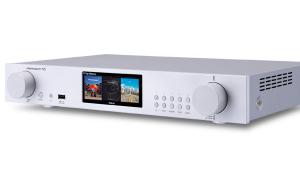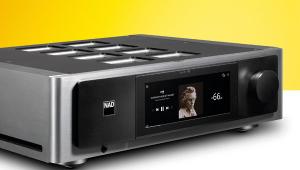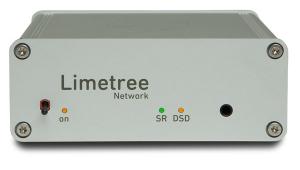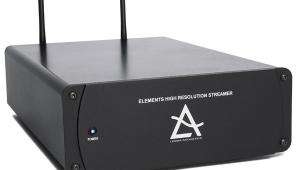HiFi Rose RS150

 Choice, it’s a wonderful thing. And while once upon time what you listened to was limited to the records, compact discs or even tapes that you had on your shelves, now it’s more a case of choosing the streaming service that best suits your taste – offering you more music than your shelves could ever hope to hold. And while streaming has seen the options of what you listen to increase beyond all imagination, how you choose to do so has followed suit. Do you go down the all-in-one route, opt for an integrated amplifier with streaming built-in or take your pick from the multitude of standalone components that include network players and DACs? From the early days of a format that were niche and expensive, network audio devices have grown to be a huge part of the market, with every hi-fi manufacturer worth its salt offering a solution or three in varying forms.
Choice, it’s a wonderful thing. And while once upon time what you listened to was limited to the records, compact discs or even tapes that you had on your shelves, now it’s more a case of choosing the streaming service that best suits your taste – offering you more music than your shelves could ever hope to hold. And while streaming has seen the options of what you listen to increase beyond all imagination, how you choose to do so has followed suit. Do you go down the all-in-one route, opt for an integrated amplifier with streaming built-in or take your pick from the multitude of standalone components that include network players and DACs? From the early days of a format that were niche and expensive, network audio devices have grown to be a huge part of the market, with every hi-fi manufacturer worth its salt offering a solution or three in varying forms.
The latest to get in on the network audio action is South Korean concern HiFi Rose, an off-shoot of Citech which has a solid reputation out East for producing everything from interactive kiosks to set-top boxes. Distributed by Henley Audio, the brand hopes to make a splash in the UK by debuting two network audio solutions, the RS150 being the flagship release. And boasting compatibility with a huge range of file formats, it’s more than worthy of the role. Airplay, Tidal with MQA, Qobuz and Roon cover the basics, while it can additionally act as either a source component or a streaming/digital preamp thanks to the inclusion of variable-level outputs in the shape of unbalanced RCAs and balanced XLRs. There’s even the option to become both a player and a streamer – by removing a panel on the underside and installing an SSD drive for storage to complement the USB-A host ports, plus there is a slot that accepts Micro SD cards.
Connectivity incorporates digital in and outputs in the form of optical, coaxial and AES/EBU sockets, USB-B for hook-up to a computer and I2S via RJ45 or DVI ports. The RS150 can also accept audio from a video device using the ARC (Audio Return Channel) protocol on a separate HDMI input and the USB ports can output audio to a suitable DAC. Completing the picture is a single set of RCA analogue inputs. Networking is of course via wired or wireless connection, with the later thanks to a plug-in USB dongle that supports aptX Bluetooth.
Machined from solid aluminium, the chassis is certainly eye catching and dominated by the 378mm-wide, IPS touchscreen panel, which stretches across the entire front fascia. One of the sharpest displays we’ve seen on such a product, this is the real clincher for the RS150 – transforming it from bulk-standard streamer into the sort of modernist slice of future tech you’re more likely to see in Blade Runner. Not content to simply display album artwork and act as a menu for random features to hide away in, it offers more formats of clock display than you could imagine (from retro mechanical flip-digits to a plain analogue face), VU meters and can even display 4K HD video (which it can also output to a screen connected via HDMI).
Keeping everything ticking away under the hood, the RS150 runs a customised Android 7.1-based architecture alongside the company’s own Rose operating system. This interfaces with the proprietary Rose Connect app (available for both Android and iOS tablets and smartphones), which is better suited to day-to-day operation and some elements of setup – although for more-indepth settings you’ll have to navigate the multiple layers of the on-screen menu on the front panel. Alternatively, basic operation can be carried out using the Bluetooth remote control. Digital conversion is handled by Asahi Kasei’s Verita AK4499EQ, compatible with LPCM up to 32-bit/768kHz and up to DSD512.
Sound quality
Unfortunately, setting up the RS150 is severely hindered by the absence of a full instruction manual in English – a problem that will hopefully be ironed out by the time you read this – and so we have to make do with the light-on-detail fast setup guide. It also takes quite a while to index and find the artwork of our admittedly hefty NAS-based music library. To save time, we instead opt to copy selected files onto a USB stick and listen via the ‘computer’ USB port. Admittedly, this results in the RS150 being used purely as a DAC and so not fully maximising its full potential.
Perhaps the first observation of note is the hefty amount of volume it’s able to kick out – making it worthwhile taking the time to go into the menu and fixing it to a more comfortable level if you plan to use the RS150 as an integrated amp or preamp. That done, there’s no denying the HiFi Rose serves up a performance that is big and bold, but packed with detail. Even when listening to a simple recording such as Javier Laso’s set of Schubert and Schumann Sonatas (a pure DSD256 file played at its native resolution) there are plenty of fine details to pick out of the mix. If forced to be ultra critical we might be inclined to point to the slight lack of space and atmosphere. However, the close focus on the solo piano, the fine impact of the playing, the weight to the instrument and the unmistakable lightness of touch of the pianist go some way towards making up for this slight shortcoming.
Switching to Vaughan Williams’ Fourth and Sixth Symphonies sees the same sense of powerful sound under pinning the presentation. Sure, it might not be as absolutely resolved as perhaps it might, but there’s certainly no denying the scale and detail of the overall effect, even if a touch of the live nature of the performance is lost in the slight bloom that’s clearly audible.
Turning the wick up a touch, the thrill of the orchestra at full speed in the Scherzo of the Fourth Symphony sees the RS150 start to let its hair down and party. Similarly, switching to something a little different in the shape of Tame Impala’s Lonerism album sees the hard-driving pop shown in the best possible light. From the thumping percussion of the intro to Be Above It, the music surges out with supreme thump and punch, carving persuasive instrumental textures without overly deconstructing the wash of sound. Pleasingly, the results appear to remain broadly the same regardless of whether music is streamed via the network, the internal drive, the digital inputs or as a Roon endpoint. The performance remains consistently rich, dynamic and rewarding with only that slightly soft soundstage focus holding it back in any way – and this only seems to be in evidence on particularly atmospheric recordings such as church-recorded choral (which can sound a tad dry) and simply miked jazz in reverberant studio acoustics.
Finally, for the sheer hell of it, a high-quality recording of Taylor Swift’s Fearless reveals all the intricacies of the instrumentation as the exuberance of Swift’s vocals is effortlessly reproduced with just the right amount of class and vivacity. If music sounds this good, maybe the sins of omission are easier to ignore.
Conclusion
So much more than just a beautifully designed component showing others the way to go, the RS150 back ups the stunning aesthetics with a performance to match. Regardless of whether it’s employed as a player or DAC the supreme levels of richness and detail not only make the slight softness on some material easier to over look, but also underline this as a supreme debut. We enthusiastically look forward to hearing what else the South Korean brand has up its sleeve in the future. HFC
DETAILS
Product: HiFi Rose RS150
Type: Network-attached player/DAC
FEATURES
● Streaming preamp functionality
● In/outputs: optical; coaxial; AES/EBU sockets
● RCA inputs
 |
Inside this month's issue:
Q Acoustics 3020c standmount loudspeakers, Perlisten R10s active subwoofer, Quad 33 and 303 pre/power amps, Acoustic Solid Vintage Full Exclusive turntable, newcomer Fell Audio Fell Amp and Fell Disc and lots, lots more...
|





















































